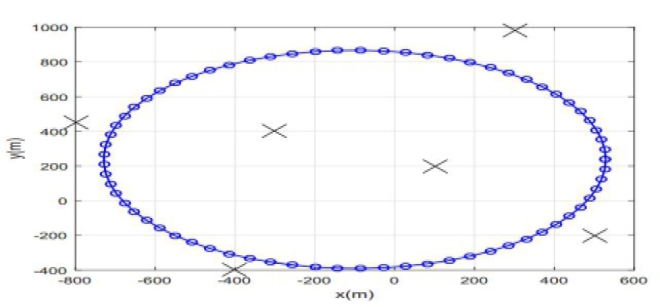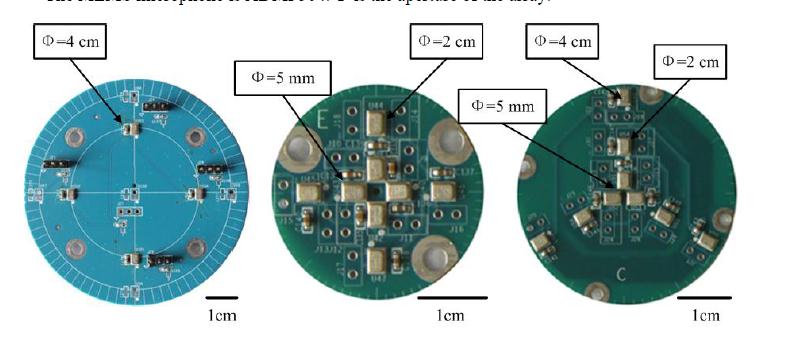-
Silicon Nanowire Microfluidic Biosensor for Multiplexed Biomolecule Detection
Sensors and Materials,Anran Gao,Yuelin Wang,Tie Li
mask on the wafer, Si was etched off by using tetramethyl ammonium hydroxide (TMAH, 25 wt%, 50 ℃). By employing the TMAH that etches Si (111) planes about 100 times more slowly than all other planes, the boundary of the top silicon layer was automatically aligned to the direction, and a very smooth (111) plane could be formed beneath the SiO2 mask. Then, a thin nitride film was deposited to protect the (111) plane previously defined. After the nitride film was patterned by ion beam etching, the 100 nm SiO2 layer beneath was totally removed by buffered oxide etching (BOE). Then, by using TMAH for the second time, a controllable SiNW with a triangular cross section was finally obtained.
-
An Efficient Solution for Joint Power and Trajectory Optimization in UAV-Enabled Wireless Network
IEEE ACCESS,Hongying Tang,Qingqing Wu,Baoqing Li
The use of unmanned aerial vehicles (UAV) as aerial communication platforms has gained significant attention due to their favorable air-to-ground channels, on-demand deployment, and highly controllable mobility.
-
Statistics of SINR in 3D Environment with Correlated Log-Normal Shadowing
IEEE Communications Letters,Liu Xiang, Xu Jing
Based on the stochastic geometry theory, the analysis for the statistics of signal-to-noise-and-interference ratio (SINR) is conducted in this letter, where the links between the base stations (BSs) and user equipments (UEs) are impaired by correlated log-normal shadowing in 3D environment. The closedform expressions of the statistics of signal-to-interference ratio (SIR), signal-to-noise ratio (SNR) and SINR are presented. Then the distribution of SINR–1 is approximated by the log- Pearson type III distribution based on the moments of SINR–1. Numerical results indicate that the cell coverage increases with the increase of the correlation coefficient between communication and interference links.
-
Seismic targets classification using wavelet packet manifold in unattended ground sensors systems
Sensors,Jingchang Huang,Qianwei Zhou,Xin Zhang, Enliang Song,Baoqing Li,Xiaobing Yuan
ABSTRACT One of the most challenging problems in target classification is the extraction of a robust feature, which can effectively represent a specific type of targets. The use of seismic signals in unattended ground sensor (UGS) systems makes this problem more complicated, because the seismic target signal is non-stationary, geology-dependent and with high-dimensional feature space. This paper proposes a new feature extraction algorithm, called wavelet packet manifold (WPM), by addressing the neighborhood preserving embedding (NPE) algorithm of manifold learning on the wavelet packet node energy (WPNE) of seismic signals. By combining non-stationary information and low-dimensional manifold information, WPM provides a more robust representation for seismic target classification.
-
Design of Small MEMS Microphone Array Systems for Direction Finding of Outdoors Moving Vehicles
Sensors,Xin Zhang,Jingchang Huang,Enliang Song,Huawei Liu,Baoqing Li,Xiaobing Yuan
In this paper, a MEMS microphone array system scheme is proposed which implements real-time direction of arrival (DOA) estimation for moving vehicles. Wind noise is the primary source of unwanted noise on microphones outdoors. A multiple signal classification (MUSIC) algorithm is used in this paper for direction finding associated with spatial coherence to discriminate between the wind noise and the acoustic signals of a vehicle. The method is implemented in a SHARC processor and the real-time estimated DOA is uploaded through Bluetooth or a UART module. Experimental results in different places show the validity of the system and the deviation is no bigger than in the presence of wind noise.




